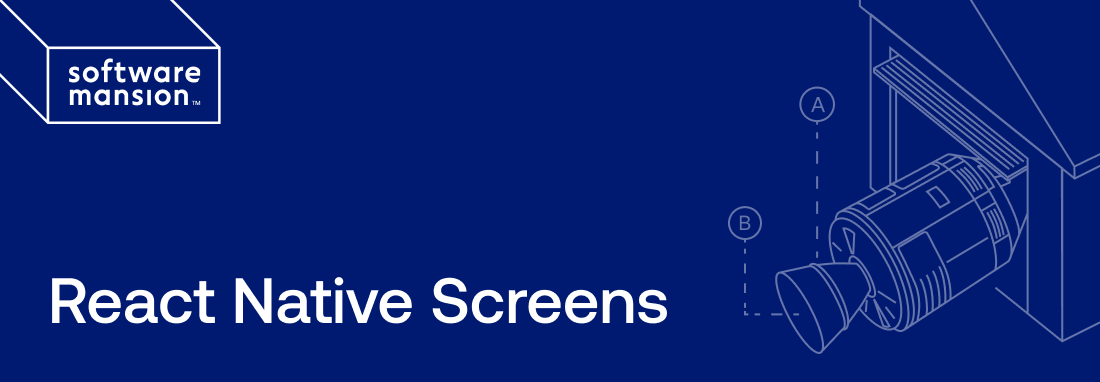Gesture Handling
- react-native-screens:
This package does not focus on gesture handling but rather on optimizing screen management. It works in conjunction with other libraries to improve the performance of gesture handling by ensuring that screens are only rendered when necessary, thus indirectly benefiting gesture interactions by reducing lag during transitions.
- react-native-gesture-handler:
This package provides a comprehensive set of gesture handlers that allow developers to create complex touch interactions. It supports gestures like taps, swipes, and long presses, enabling fine control over touch events. It also allows for gesture recognition to be combined, making it suitable for applications that require intricate gesture-based navigation or interactions.
- react-navigation:
This library offers built-in gesture handling for navigation transitions, allowing for swipe gestures to navigate between screens. It provides a user-friendly API for implementing gestures but does not offer the depth of gesture handling that react-native-gesture-handler provides.
- react-native-navigation:
While primarily focused on navigation, this library does support basic gesture handling for navigation transitions. However, it is not as extensive as react-native-gesture-handler and is more suited for managing navigation flows rather than detailed gesture interactions.
- react-router-native:
This package is primarily focused on routing rather than gesture handling. It allows for declarative routing in React Native applications, but for advanced gesture handling, it is recommended to use it in conjunction with react-native-gesture-handler.
Navigation Structure
- react-native-screens:
This package complements navigation libraries by providing a native screen management solution. It does not offer a navigation structure itself but works best when used with libraries like react-navigation or react-native-navigation to enhance performance.
- react-native-gesture-handler:
This package does not provide navigation structure; it is solely focused on gesture handling. It is often used in conjunction with navigation libraries to enhance user interactions within the navigation flows.
- react-navigation:
This library offers a flexible navigation structure that supports various navigation patterns, including stack, tab, and drawer navigation. It is highly customizable and integrates well with React Native components, making it a popular choice for many developers.
- react-native-navigation:
This library provides a complete navigation structure, including stack, tabs, and drawer navigation. It is designed to work with native navigation components, ensuring a smooth and performant user experience that feels native to the platform.
- react-router-native:
This package provides a routing structure similar to React Router for web applications. It allows developers to define routes declaratively, making it easy to manage navigation in a React Native app.
Performance Optimization
- react-native-screens:
This package significantly improves performance by allowing screens to be mounted and unmounted as needed, reducing memory usage and improving the responsiveness of the app. It is particularly beneficial for applications with many screens or complex navigation flows.
- react-native-gesture-handler:
This library is optimized for performance with gesture handling, ensuring that gesture recognition is efficient and does not block the main thread. It minimizes lag during interactions, providing a smoother user experience, especially in complex gesture scenarios.
- react-navigation:
While this library is user-friendly, it may not be as performant as react-native-navigation in terms of native transitions. However, it provides a good balance of performance and ease of use, making it suitable for most applications that do not require native-level performance.
- react-native-navigation:
This library is built for performance, utilizing native navigation components that enhance the speed and responsiveness of navigation transitions. It minimizes overhead by leveraging the native APIs, making it suitable for applications with heavy navigation requirements.
- react-router-native:
This package is designed for routing rather than performance optimization. It is best used in applications where the routing logic is complex, but it may not offer the same level of performance as native navigation solutions.
Learning Curve
- react-native-screens:
This package is relatively easy to integrate into existing navigation libraries, but understanding its optimal use cases may require some learning. It is straightforward for those familiar with React Native.
- react-native-gesture-handler:
This library has a moderate learning curve, especially for developers new to gesture handling in mobile applications. Understanding how to implement and combine gestures can take some time, but the documentation is comprehensive and helpful.
- react-navigation:
This library is known for its gentle learning curve, making it accessible for beginners. Its API is intuitive, and many developers find it easy to implement various navigation patterns without extensive prior knowledge.
- react-native-navigation:
The learning curve for this library can be steep for those unfamiliar with native navigation concepts. However, once understood, it offers powerful navigation capabilities that can significantly enhance the user experience.
- react-router-native:
The learning curve is similar to that of react-navigation, especially for developers already familiar with React Router. It provides a familiar API for routing, making it easy to adopt for those transitioning from web to mobile.
Community and Support
- react-native-screens:
Being a part of the React Native ecosystem, this package benefits from community support and is actively maintained. It is often recommended in conjunction with other navigation libraries, enhancing its usability.
- react-native-gesture-handler:
This library has a strong community and is widely used in the React Native ecosystem. It is well-maintained, with regular updates and a wealth of resources available for developers.
- react-navigation:
This library has one of the largest communities among React Native navigation solutions. It is well-documented, with extensive resources available, making it easy for developers to find help and examples.
- react-native-navigation:
This library also has a robust community, backed by Wix, which actively maintains it. There are numerous tutorials and documentation available to assist developers in implementation.
- react-router-native:
This package has a dedicated community, especially among developers familiar with React Router. While it may not be as large as some other libraries, it provides sufficient resources and support for effective implementation.
















